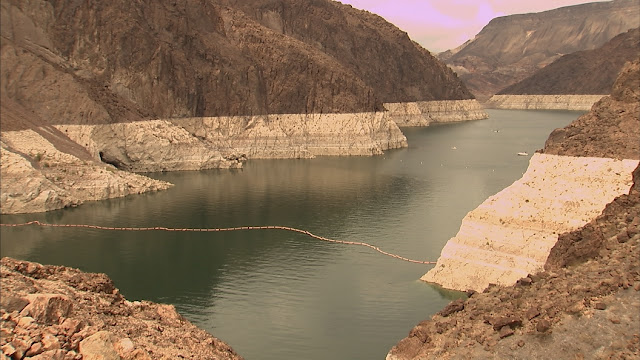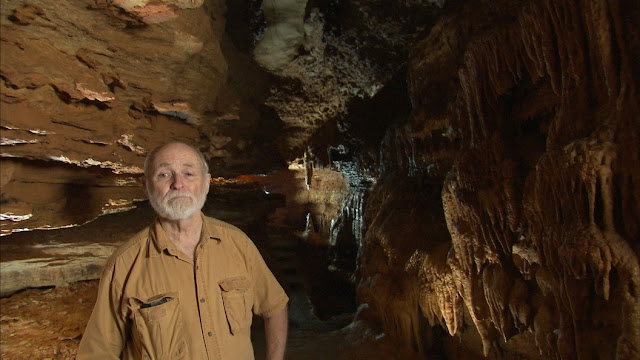April 6 2016, 17.02 PM IST || Pocket News Alert
Mumbai, April 6, 2016: It took millions of years but man is finally starting to understand what makes this wonderful planet so unique. Discovery Science brings new season of its exploratory series SECRETS OF THE EARTH that examines the characteristics of the Earth's interior, surface and atmosphere.

Premiering on April 11, SECRETS OF THE EARTH will air Monday to Friday at 10 pm on Discovery Science.
SECRETS OF THE EARTH explores Earth with the same sense of awe and wonder normally reserved for alien worlds. The series shows Earth as it has never seen be before, by taking advantage of a shift in NASA priorities toward studying our own planet. Increasingly, satellites intended to study outer space are being turned back towards Earth revealing stunning new imagery of our planet's surface, oceans, atmosphere, gravity and all the amazing processes that keep our planet and humankind alive.

Reaching beyond the realm of earth sciences, the series compares the attributes of Earth to other planets and moons. Is our home planet the richest in precious metals? Or, should our next Gold Rush be on the moon? How do our earthquakes compare to the quakes that rock the sun? How much taller could trees and mountains grow if Earth had gravity as low as Mars'?
Computer graphics, visual analogies and a recurring cast of expert scientists combine to reveal new aspects of the world you think you know, from canyons of gravity that warp space and time to rain triggered by cosmic rays.
Go deeper into the world of science as Discovery Science encourages viewers to question everything.
The episode line-up includes: The Birth and Death of the Planet examines the creation of the Earth 4.5 billion years ago and what could become of it in the future. Animal Invaders takes a look at invasive species, including Burmese pythons in the Everglades and snakeheads in the Potomac River, and the ecological hazards they present. Man-Made Earthquakes offers a look at earthquakes and the possible causes by man-made activity, including dams, reservoirs, mines and fracking. It Fell From Space inspects asteroids, comets and space debris, and the havoc they can cause on the Earth's surface. The episode Sinkholes uncovers the surface of planet earth to conceal a secret predator which swallows cars, trees, houses and even people.
Find more about Sinkholes:
Planet Earth hides a secret world beneath its land - a honeycomb of caverns linked by underground water ways. When soil slips down through the cracks of the cave roof, the land above can collapse creating a sinkhole. Sinkholes can take eons to form below ground and mere seconds to strike.
Florida’s Devil’s Den sinkhole is a gateway to a vast cave system with elaborate hidden waterways that eat their way through the limestone. This sinkhole is also the entrance to a cave system within the aquifer system in Florida, which provides 92% of Florida’s population with drinking water.
Earths aquifers are systems that store water underground in the bedrock. Although most humans consider sinkholes to be a dangerous menace, they’re actually part of Earth’s natural water distribution system.
Sinkholes and caves are a natural conduit to our groundwater. They allow the precipitation that falls on the Earth’s surface to go underground. That underground water then becomes something that we can extract and we can use and we rely on every single day.
A key trigger to sinkholes is really all about weather. The Devil’s Den offers the unique opportunity to explore a sinkhole from the inside. The interior cavern is more than 200 feet in diameter and 60 feet deep. It formed more than ten thousand years ago. The secret of this and other sinkholes around the world lies in a type of bedrock that geologists call karst terrain. It’s usually composed of the common rock limestone, which is extremely porous.
How can solid rock become so full of holes? This is because Limestone is actually the compressed remnants of ancient marine life, including their calcium rich shells and skeletons. The calcium in the limestone is very reactive to any form of acid. Even the natural acidity of ground water would dissolve it. The rain is very acidic, however, a mild acid. It is probably less acidic than orange juice, but it will still, over time, dissolve rocks.
Over hundreds of thousands of years seasonal rains drains down into the secret world below the surface and penetrates the bedrock. The acidic waters eat away the limestone and form caves hidden from the surface.
One thing that really plays into the equation of dissolvable rock is the humid environment. Basically, areas that are kind of east of the 30 inches per year precipitation tend to be more dissolvable prone, at least for limestone.
And it’s not just Florida. Consider this alarming fact, this type of bedrock covers one fifth of the planet and lurks below 40% of the United States.
The state of Kentucky is one of the Earth’s prime sinkhole areas. 50% of its surface is underlain by the porous bedrock, mostly limestone, that scientists call karst terrain. It’s the perfect environment for caverns that collapse into sinkholes. In Kentucky we have a little over 5,000 caves known and documented.
Get to know more about Sinkholes in the SECRETS OF THE EARTH, airing Monday to Friday at 10 pm.
